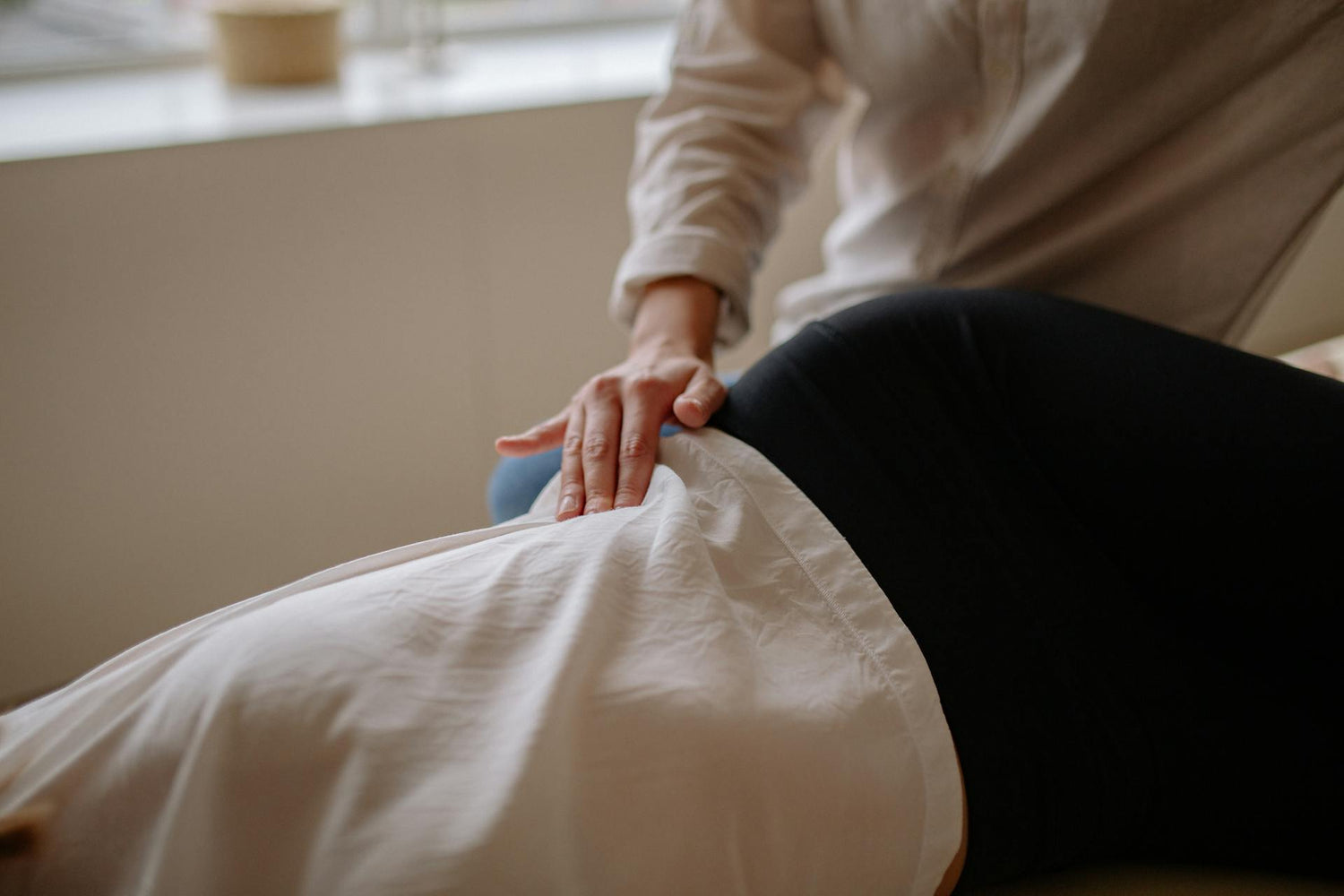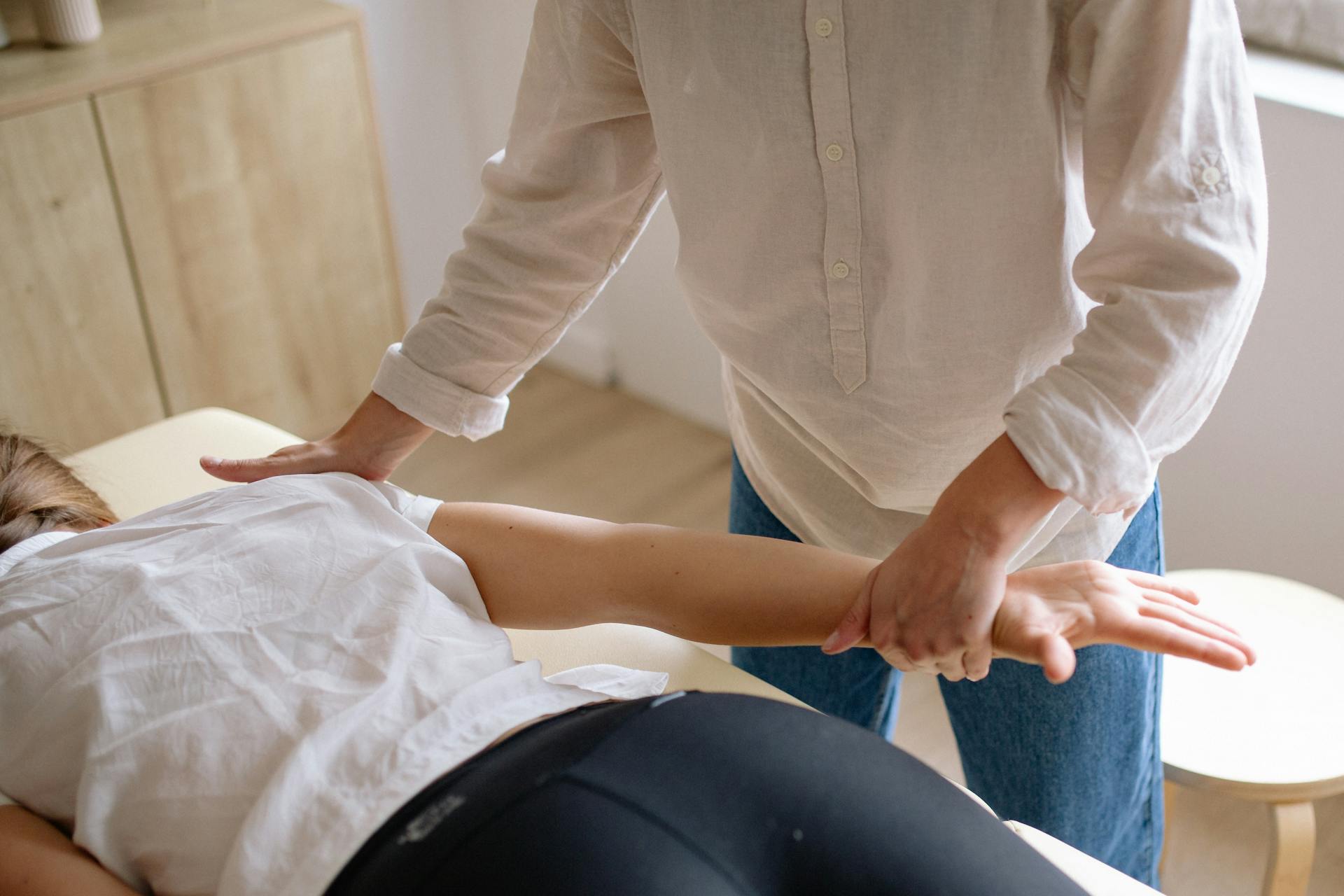If you’ve been fending off digestion issues lately, you’re certainly not alone. Gut-related symptoms affect nearly two-thirds of people in the United States, and these symptoms can stem from a variety of causes — ranging from simple, everyday triggers to more serious medical conditions.
For most people, lifestyle changes and medications can help keep gut discomfort at bay. But did you know that a gentle massage could also support your digestive health?
Read on to learn more about massage for digestion, including how it works and some safety tips to know before you start.
Understanding Digestive Discomfort
When you’re dealing with digestive problems, you might notice symptoms like:
- Changes in stool health, such as constipation or diarrhea
- Abdominal pain
- Bloating and cramping
But what exactly causes symptoms like these? It may be something as minor as eating foods that don’t agree with your gut, or as serious as a condition like inflammatory bowel disease (IBD). Specifically, factors that can cause gastrointestinal (GI) discomfort include:
- Not eating enough fiber, fruits, or vegetables
- Not drinking enough water
- Lack of physical activity
- Food allergies or intolerances
- Medical conditions like gastritis, celiac disease, inflammatory bowel syndrome (IBS), and more
At any rate, it’s best to talk with your doctor if you notice digestive discomfort that happens often, is abnormally painful, or is affecting your quality of life.
Why Try Massage for Digestion?
There are many reasons for digestive problems, and massage therapy won‘t always be a good choice for each of them. However, a gentle pressure massage can have an incredibly positive impact on gut health and motility — and could even relieve symptoms like constipation and bloating.
Here’s how it works:
Massage Can Ease Constipation, Gas, and Bloating
If you’re someone who deals with occasional or chronic constipation, massage may be able to offer relief. In fact, a 2022 randomized controlled trial in the journal Physical Therapy found that abdominal massage helped to reduce constipation severity and quality of life compared to a placebo.
In other words, if you’ve been feeling constipated, a simple belly massage may help get your digestive tract moving again. But how (and why) does it work?
Put simply, properly-applied pressure from massage can stimulate the muscles in the gut while promoting relaxation. In turn, this can help aid your body’s natural digestive processes.
And massage’s benefits can go beyond constipation. Because of its ability to stimulate your GI tract, it may also help with:
- Alleviating cramps, gas, and bloating
- Increasing the general frequency of bowel movements
- Improving your overall gut health
Other Benefits of Massage for Those With Digestive Symptoms
When you have constipation or bloating, it can affect more than just your gut. Fortunately, incorporating massage for digestion in your daily routine can also boost other aspects of your health.
From sleep to mood and more, here are some additional ways that massage can support your digestive health and overall well-being:
Sleep and Insomnia
If you’ve been dealing with recent digestive issues, you might’ve noticed problems with your sleep, too. In fact, sleep and digestion appear to go hand-in-hand, and research has found that too little sleep can increase a person’s risk of constipation by as much as 30%.
The good news? Massage is a powerful, natural way to relax the body and mind. And by using it as part of your bedtime routine, you could notice a significant boost in your sleep quality.
It works by activating the relaxation response, which helps the body reach a physiological state of calm. In turn, this can result in slower breathing, lower blood pressure, and changes in hormones — all of which can make it easier to get a good night’s rest.
Stress Relief
Stress is another factor that can majorly affect your digestion. That’s because when your body is stressed, it pauses digestion in an effort to reserve its energy and prepare for threats.
Fortunately, massage can be an excellent tool for practicing mindfulness and helping shift your body out of its stress mode. In turn, this can help to support your digestion and overall gut health.
Mental Well-Being
Mental health struggles like anxiety and depression can be common for those with digestive problems. Luckily, the power of touch is a known mood booster, and massage from a therapist or a loved one can have a seriously positive effect on your well-being.
With that being said, you don’t always need to see a therapist or ask a partner for help to experience a wellness boost from massage. You can also use tools like foam rollers, electric massagers, massage guns — or even your own two hands — to reap the benefits of a self-care massage at home.
Can You Use Massage for IBS and Other GI Conditions?

If you live with a GI condition, it’s common to wonder whether massage is right for you. While massage is a safe, natural tool for most people, the truth is that your unique situation will affect whether or not it can help.
For example, some people with IBD find that abdominal massage worsens or causes flare-ups — but may still enjoy the relaxation of a Swedish massage on other parts of the body.
On the other hand, people with indigestion or chronic constipation may find that massage makes a world of difference in their symptoms. Overall, there’s no one-size-fits-all answer, and it will depend on your individual case.
How to Use Massage Safely With a GI Condition
When you have a serious or chronic condition like Crohn’s disease or IBD, you’ll want to first get the OK from your doctor before trying natural therapies like massage.
If approved, here are some additional tips that can help you try it safely:
- Look for a massage therapist experienced in working with GI conditions. If you’re not sure where to start, you can ask your doctor if they have any recommendations. You can also call your local massage clinic to see whether there’s an experienced therapist there who can help.
- Pay attention to how your body responds. Sometimes, it may be helpful to keep notes in a journal or on your phone about how you feel during and after the massage.
Types of Professional Massage
Massage can be a helpful self-care tool for many people with digestive issues. But if you decide to go this route, what can you expect in a session?
To start, you’ll spend a few minutes at your appointment talking to your therapist about your health history and goals. This way, they’ll have all the information they need to choose the right techniques for you.
Once they know a bit about you — including your health concerns and what you hope to get out of the session — they’ll work with you to decide which types of massage can bring you the most relief.
Some popular options include:
- Swedish massage: Known as the “king” of relaxation massage styles, Swedish massage is an excellent option for those with digestive discomfort. It involves gentle pressure to relax the muscles, boost blood flow, and support your body’s overall balance.
- Deep tissue massage: This style of massage involves using more intense pressure to target the deepest layers of muscle and fascia.
- Aromatherapy massage: Calming scents like lavender or mint can be added to any massage session, which can help you find deeper relief from your symptoms.
How to Try Digestion Massage for Yourself
If you want to try self-massage for digestion, the good news is that there are plenty of methods you can try at home — from those that focus on the abdomen itself, to those that target the whole body and pressure points to stimulate gut health.
Here are some of the types of self-massage you can try, along with how to do them:
Abdominal Massage
Abdominal self-massage is an easy, soothing technique that can help you improve your digestive function. Simply:
- Find a comfortable place to lay, like a yoga mat, couch, or bed.
- Lay on your back, and bend your legs so that your knees are pointing upward. This will help relax the abdominal muscles as you prepare for the massage.
- Start with one hand on your stomach, and take a few deep breaths to calm your mind and body.
- Using your ring, middle, and pointer fingers, begin by rubbing your stomach in small circular motions near the right hip bone.
- Slowly make your way up towards the right side of your ribs, continuing the motion with light-to-moderate pressure.
- Then, use extra-light pressure to massage across the middle of the abdomen. Begin just under your rib cage and use gentle, sweeping motions from right to left.
- Finally, use gentle pressure to massage your belly in a clockwise motion. Start at the bottom right, glide up towards the center, and massage down towards the left.
- Repeat for a total of 5 to 10 minutes.
Foot Reflexology Massage
Reflexology is an ancient type of foot massage that aims to improve health and well-being through pressure points on the feet. While it doesn’t target the gut directly, a 2020 review found that it can have some surprisingly positive effects on digestive health.
To try it out, here’s a simple 5-minute reflexology technique that’s meant to stimulate the digestive tract:
- Sit in a comfortable chair, and cross your foot up over your knee.
- Begin by “walking” your thumb up the outer side of the bottom of your foot. Start at the heel and massage your way up until you reach just underneath the ball of your foot.
- Then, walk your thumb transversely across the middle of the foot, using moderate pressure.
- Use the same technique to massage down the inside arch of the foot, making your way to the center of the heel.
- Finally, use slow, moderate pressure to glide your thumb from the center of your heel up toward your inner ankle.
- Repeat for 5 to 10 minutes, up to a few times per day.
Relaxation Self-Massage
Abdominal massage can offer powerful benefits for digestive health, but what if you’re not able to massage that area?
Whether you’re too bloated to massage the stomach, or you’re suffering from another gut-related health issue like IBS, you can still use massage to support relaxation — and in turn, aid in your body’s natural digestive processes.
That’s because many types of massage can activate your parasympathetic nervous system, otherwise known as your “rest and digest” system.
To help activate your body’s relaxation response, here’s an easy massage technique to try at home:
- This quick technique will focus on the neck, sides, and back.
- To begin, sit or stand in a comfortable position with upright posture.
- Tilt your head to the right, and use small, circular motions to gently massage your left trapezius muscle (the area between your neck and shoulder). Use steady, moderate pressure to work your way up the side of the neck and back down for 1 to 2 minutes.
- Tilt your head to the left, and repeat with the other side.
- Then, reach behind your back and use your knuckles to slowly glide up the lower back muscles for 2 to 3 minutes.
- If it feels good, you can finish by kneading along your side muscles for 1 to 2 minutes more.
- Repeat for a total of 5 to 10 minutes, up to a few times per day.
Are There Any Risks of Trying Massage for Digestion?

For the most part, massage is a low-risk, natural tool that can relieve many aches and pains — but in some cases, it can interact with certain medical conditions.
To ensure you stay safe, here are some times when it’s best to talk to your doctor before trying massage for digestion:
- You are recovering from surgery, especially near the gut or stomach.
- You’re currently pregnant. Gentle prenatal massage is generally safe, but it’s always a good idea to check with your physician first.
- You have a skin condition or open wounds on the body.
- You have a spinal injury or any other injury near the abdomen.
- You have any other health concerns that haven’t yet been given the green light for massage by your doctor.
Support Healthy Digestion in Other Ways
When your digestion is feeling slowed down or stuck, massage can be a significant aid in getting things moving again. However, plenty of other tools can also help you see benefits in your gut health.
Here are just a few examples:
Find a Diet That Works for You
If you want to see long-term changes in your digestion, a great first step is to cut out foods that your body may not agree with, such as dairy or gluten. In addition, you can consume more fruit, vegetables, probiotic-rich foods, and fiber to improve the balance of healthy bacteria in your gut.
Stick to an Exercise Routine
You probably know that what you eat massively impacts your digestive health, but did you know that exercise also plays a key role? Research has shown that physical activity can improve your gut microbiome and even help alleviate GI symptoms.
If you’re not sure how to start working out, know that it doesn’t have to be complicated. Even something as simple as a 30-minute walk a few times per week could help you see a difference in your digestive comfort.
Talk to Your Doctor
Finally, it’s always important to talk to your doctor if you’ve been dealing with gut symptoms that are persistent, painful, or impacting your daily life.
With their help, you can identify the source of your symptoms, whether it’s a food intolerance or something more serious. You can then work with them to choose treatments that can get you on track to feeling healthy again.
The Takeaway on Massage for Digestion
When you have digestive discomfort in the form of bloating, cramping, or constipation, studies have shown that massage could bring relief.
Abdominal massage can be an effective option for many people. But if you’re not able to massage your stomach due to a medical condition (or you find it to be a little uncomfortable), you can help your body shift into “rest and digest” mode with other types of massage — like foot reflexology.
To start, you can schedule a visit with a massage therapist trained in working with GI issues. Or, you can invest in a therapeutic, physician-trusted tool to reap the benefits of massage at home.
Check out the MedMassager Body Massager Plus today to get started, or learn more about the many health benefits it can provide here.



